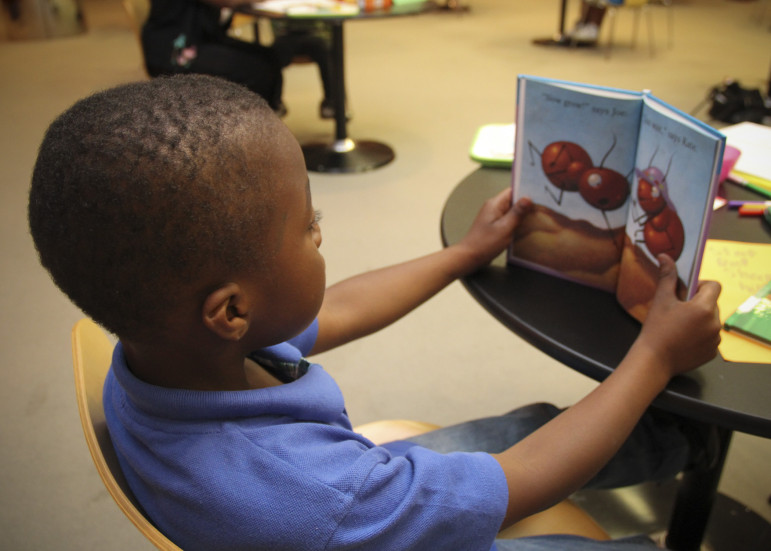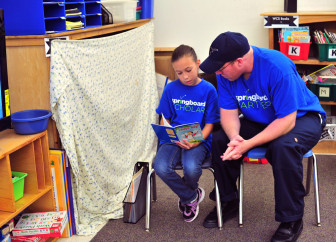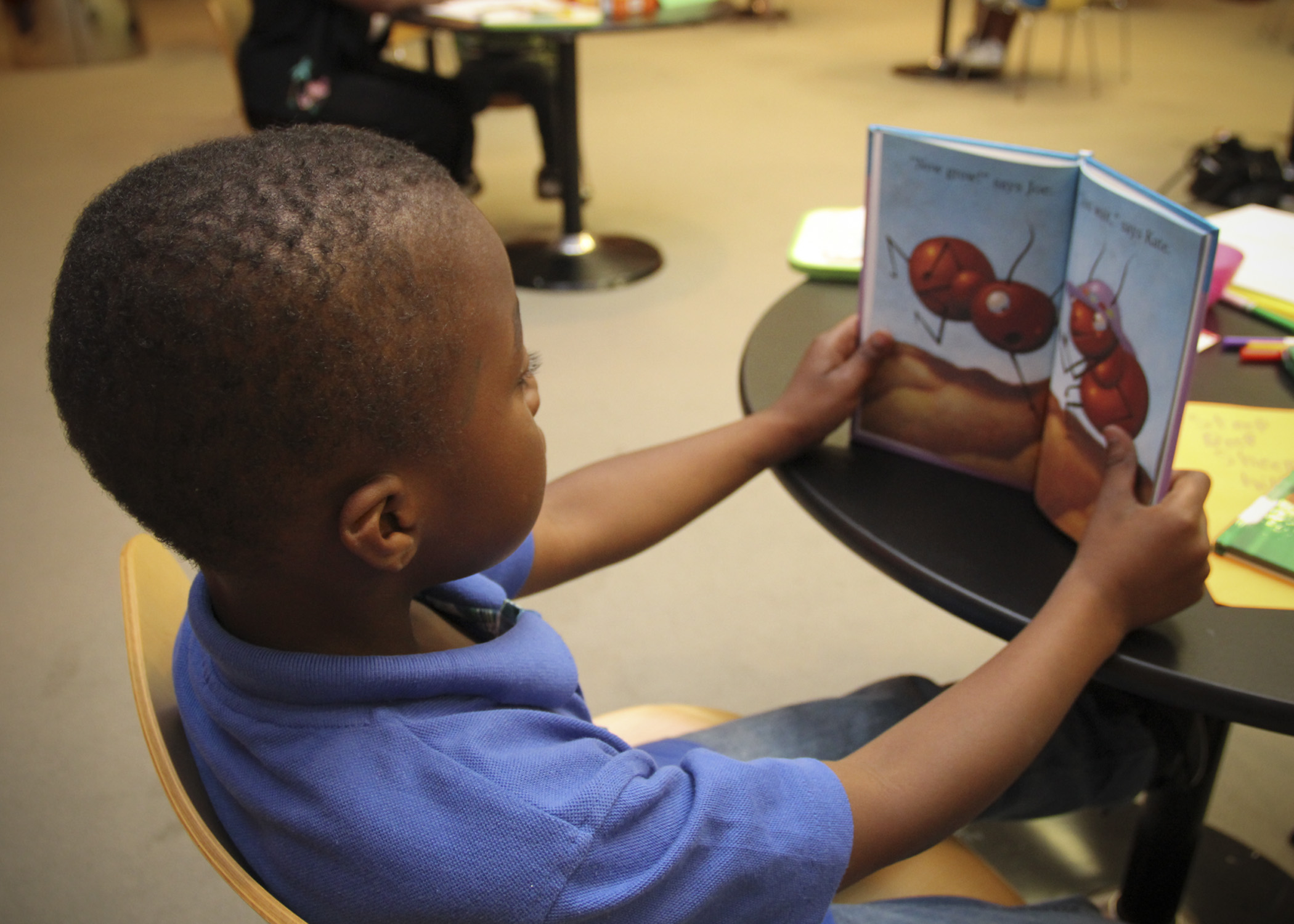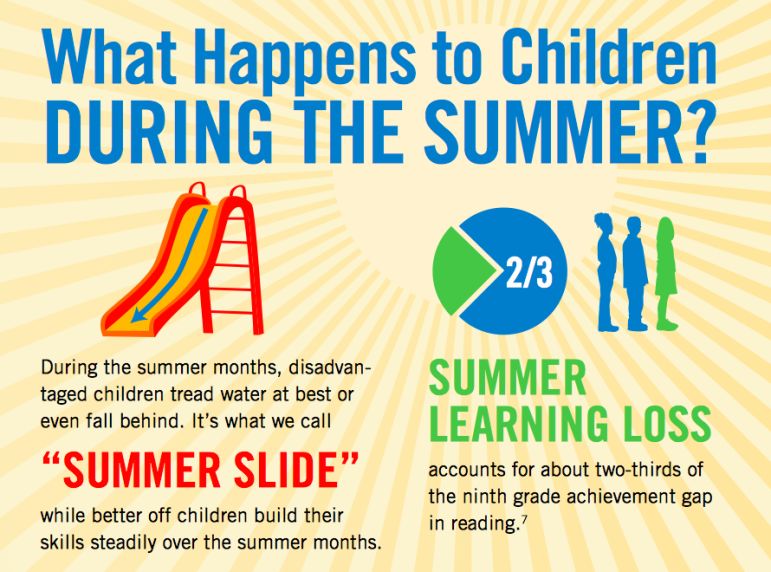
National Summer Learning Association
The Richland Library in Richland County, S.C., operates Project Summer Stride to ensure that children have access to books, tutoring and learning opportunities during the summer.
Here’s a stark picture of the “achievement gap”: Four out of five low-income kids are not reading proficiently at the end of third grade, according to a January 2014 Annie E. Casey Foundation report. This is true of only half their higher-income peers, the report said.
Another major contrast: The difference in standardized test scores between low- and high-income students grew 40 percent since the 1960s, according to Stanford University sociologist Sean F. Reardon.
The National Summer Learning Association sees summer learning programs as a crucial response.

National Summer Learning Association
The Springboard Collaborative operates a summer reading program in Philadelphia that involves parents in children’s reading projects.
“If we really want to close the achievement gap we have to recognize that learning opportunities have to happen in the summer,” said Sarah Pitcock, chief executive officer of the association. “It’s really everyone’s responsibility.”
According to the association, more than half the education gap between lower- and higher-income youth can be explained by unequal access to summer learning opportunities.
This year, the organization plans a national event in Baltimore to herald Summer Learning Day, which will be Friday, and asks summer program providers to host local events to celebrate and publicize summer learning. More than 700 events are planned.
The organization also asks individuals, program providers and businesses to pledge to #keepkidslearning.
Summer learning can take place in a variety of places, from all-day-enrollment programs to programs at libraries, recreation centers or public housing, Pitcock said.
A recent report by the National Summer Learning Association, “Accelerating Achievement Through Summer Learning,” points to several critical times for students. If kids don’t learn to read well by the end of third grade, they are four times more likely to drop out of school, the report said, citing research from the Annie E. Casey Foundation.
“Early intervention is so critical to remediate the gaps,” Pitcock said, and summer learning programs can intervene.
The summers before and after middle school are also turning points, the report said.
Between fifth and sixth grades, a lot of kids show a sharp drop in achievement, Pitcock said.
“So, before sixth grade can be a critical time to help them transition,” she said — and the same holds true for the summer before ninth grade.
High-quality summer programs not only help with academic skills, they can help kids socially by helping them make friends, letting them see the new school campus and even meeting teachers, she said.
“It helps make the school transition more successful,” Pitcock said.
States are recognizing the value of summer learning, she said. More than 100 bills in state legislatures this year called for support of summer education, according to an analysis by the association.
To find Summer Learning Day events, see NSLA’s interactive map at summerlearningdaymap.org.


























